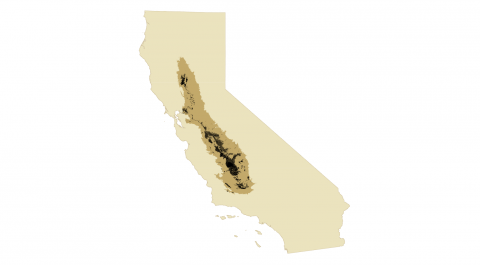The need to mitigate climate change, safeguard energy security, and increase the sustainability of human activities is prompting a rapid and global transition from carbon-intensive fuels to renewable energy (IPCC 2014). Among renewable energy systems, solar energy has one of the greatest climate change mitigation potentials with life cycle emissions as low as 14 g CO2-eq KWh-1 (carbon dioxide equivalent per kilowatt hour; compare this to 608 g CO2-eq KWh-1 for natural gas). Solar energy embodies diverse technologies able to capture the sun’s thermal energy, such as concentrating solar power (CSP) systems, and photons using photovoltaics (PV). Solar energy systems are highly modular ranging from small-scale deployments (≤ 1 megawatt [MW]; e.g., residential rooftop modules, portable battlefield systems, solar water heaters) to centralized, utility-scale solar energy installations (USSE, ≥1 MW) where a large economy of scale can meet greater energy demands. Nonetheless, the diffuse nature of solar energy necessitates that large swaths of space or land be used to collect and concentrate solar energy into forms usable for human consumption, increasing concern over potential impacts on natural ecosystems, their services, and biodiversity therein. For example, at a capacity factor of 0.20, a single terawatt of USSE capacity scales to 142,857 km2, roughly the area of the state of New York, USA, providing challenges for the integration of potentially massive projects into complex and fragmented landscapes.
The decisions humans make about how much land to use, where, and for what end-use are drivers of Earth system processes. For example, changing the use of land or converting it from one land-cover type to another is a source of greenhouse gas emissions, which are released to the atmosphere when biomass, including soil, is disturbed or removed. How then do we decide when to convert a forest that serves as a carbon sink into a farm that feeds a community, or a farm into a PV park that electrifies a rural village? Innovation and policies directing sustainable pathways of land use for energy and food production can be utilized to address an increasing global population of which 1.5 billion today live without access to electricity. Energy poverty leads to a loss of human health and wellbeing and depressed economic and educational opportunities, particularly for women and children. Our research here is designed to demonstrate, quantify, and facilitate the potential of solar energy systems to address global problems related to climate change, energy access, and the sustainability of food systems, which are interconnected. This research draws from ecological field experiments, knowledge data discovery, geographic information systems, spatial and economic modeling, and is comprised of five interrelated projects:
- Environmental co-benefits of solar energy
- The Energy-Food-Water Cube: Capability and scalability in on-farm energy production
- Global solar energy brightspots: Shinning light on the world’s energy insecure
- The land-energy-food nexus in California’s Central Valley
- Limits of land: Global estimates of land for food and energy
